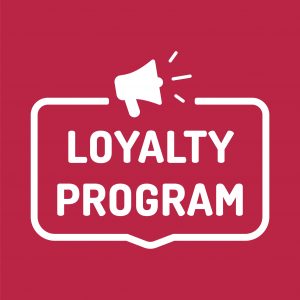15 Oct 5 misconceptions about customer loyalty programs

Gartner predicts that 80% of your future profits will come from 20% of your existing customer base. So basically – you need to look after your existing customers.
Many brands are investing heavily in customer loyalty programs, designed to not only generate loyalty, but increase customer retention and provide a point of differentiation – ultimately to get their customers to shop with them again and again.
A lot of loyalty programs actually have a bad reputation. There are a number of misconceptions about loyalty programs, their purpose and value. In this article, we explore the most common ones, and give our perspective on how a brand can drive genuine customer loyalty.
1. You need a loyalty program to have loyal customers
Customer loyalty comes down to having strong relationships with your customers, knowing and understanding who they are. Anticipating their needs, wants, desires and keeping communications relevant and timely. A loyalty program could enhance the relationship, however it’s not a mandatory requirement to drive loyalty.
There is a huge difference between a loyalty program and a customer program. A loyalty program can be used as a tool within a well crafted customer program. Take a look at Apple, one of the world’s leading brands, they have no loyalty program, but a sophisticated customer program to support their customers i.e. their Genius bar, every customer is entitled to a one-on-one support session to ensure they get the most out of their Apple product. It’s also a place to go if something goes wrong.
There are many ways to drive loyalty without a loyalty program through customer recognition, efficient use of data, enhanced customer experiences and strategic communications.
2. The loyalty program will sell itself
Don’t expect customers to come flocking as soon as you launch a loyalty program. Whilst marketing the program is extremely important, we would argue that staff buy-in and support is more important. Your employees need to truly understand the program, why it exists, and how it benefits the customer and the brand. After all, they are the ones essentially ‘selling’ the program to your customers. Get your employees excited about the program and ensure they have all the resources they need.
The user experience needs to be seamless and beautiful to deliver on the promise you made about how great being part of the program will be, don’t make the sign up process frustrating and difficult.
3. Customers aren’t willing to pay for loyalty program membership
If a customer believes there is value in doing so, they are happy to pay for a loyalty program. Brands who don’t charge their customers typically don’t differentiate their benefits from their competitors i.e. free/discounted product when you sign up, birthday voucher, etc. is the same for everyone.
Look at Amazon Prime, customers receive multiple benefits such as free delivery and access to Amazon Prime video. A local example, The Coffee Club’s VIP membership costs $25 per year to join. In return, members receive 2 for 1 hot drinks any day, every day, half price ‘gift a friend’ membership. These are incentives that influence their customers behaviour, whilst delivering the opportunity of new customers.
If you differentiate and add value, there’s no reason why you shouldn’t charge for your loyalty program.
4. Customers are loyal because we give them discounts
Rewarding loyal customers with discounts is counter-intuitive (they would have purchased anyway), instead reward them with value adds with high perceived value, low cost incentives. For example invitations to exclusive events, input and early access to new products, encourage them to sign their friends up in order to receive benefits themselves.
If you’re always offering discounts, customers come to expect it. You are influencing and encouraging this behaviour. Price is important but use it occasionally or they will expect it all the time, or hold off purchasing until you release your discount emails.
Reward loyal customers with $ when you are trying to change their behaviour – i.e. turn a daily coffee drinker into a once a week lunch purchase (start with a discount until the new behaviour is created).
5. All customers are equal
One of the quickest ways to lose a customer is if you treat them as a number on a database, bombarding their inbox every other day with the same comms. The unsubscribe button is only one-click away. Mix it up depending on where they are on their journey with your brand. Use customer data to segment and target your customers based on their behaviour now and expected next behaviour to personalise each individual journey.
Summary
We’ve established that customer loyalty is not driven by a loyalty program, rather it’s about the relationship you have with your customers, understanding their behaviour and where they are in the customer lifecycle.
Having a loyalty program isn’t the answer to customer attraction and acquisition, but a strategic, well executed customer lifecycle program is the answer to customer retention. Treat your loyal customers with the respect and recognition they deserve (and have earnt).
Customology are specialists in customer lifecycle management. Contact a Customologist today on 07 3902 7700 or hi@customology.com.au for more information on how we can help your brand design, build and execute a customer or loyalty program.
Subscribe to receive our latest insights
|
Listen to...
|


